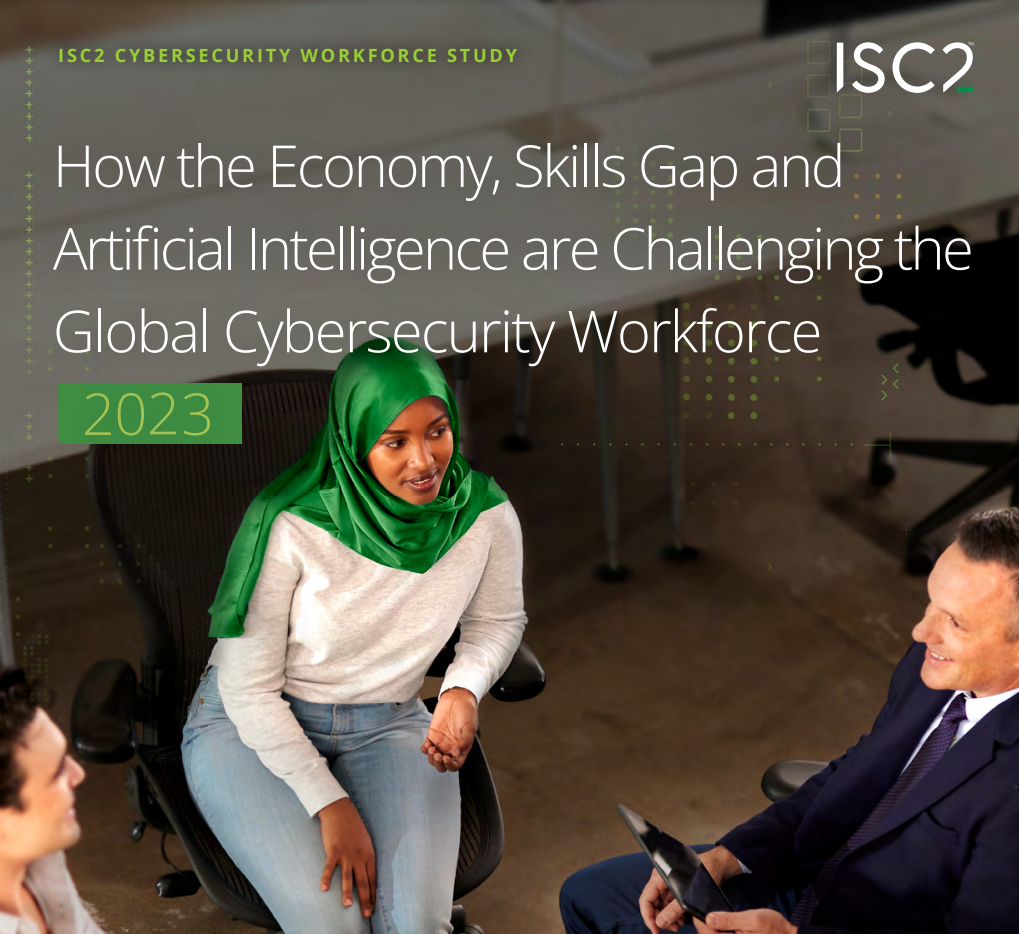Embracing the Future of Cybersecurity

Embracing the Future of Cybersecurity: Insights from the ISC2 Cybersecurity Workforce Study 2023
Introduction
In the ever-evolving realm of cybersecurity, challenges are a constant companion. The Cyber Workforce Study 2023 provides a deep dive into the intricate web of issues that cybersecurity professionals face, offering valuable insights and suggesting strategies to overcome these hurdles. Let’s dissect the key findings and explore ways to adapt and thrive in this demanding environment.
Rising Pressure on Cybersecurity Professionals
Cybersecurity professionals are under more pressure than ever before. With economic uncertainty, rapid technological changes, and fragmented regulations, they’re tasked with safeguarding global infrastructure and systems from a myriad of threats. The report found that the pressure has led to a modest decrease in job satisfaction. One crucial takeaway is the need for support and investment from leaders across the public and private sectors.
Cybersecurity professionals must advocate for their essential role and influence decision-makers to prioritize security.
Challenges in Hiring and Skills
The study reveals that 67% of organizations report a shortage of cybersecurity staff, and a staggering 92% face skills gaps. Cloud computing security, AI/ML, and Zero Trust implementation are the most sought-after skills. To address these challenges, organizations can invest in training and development programs, collaborate with educational institutions, and consider innovative recruitment strategies. Upskilling and reskilling the existing workforce is equally vital.
Growing Workforce and Gap
While the cybersecurity workforce has grown by 8.7%, the workforce gap has also expanded by 12.6%. This discrepancy highlights the urgency to attract more professionals to the field. Encouraging diverse talent pipelines, offering mentorship programs, and promoting cybersecurity as an attractive career path can help close the gap.
The Role of AI in Cybersecurity
The report delves into the impact of artificial intelligence on cybersecurity. Will AI enhance threat detection and response, reshape job roles, or even eliminate some positions? The answer is likely a combination of all these scenarios. Cybersecurity professionals should embrace AI as a tool to enhance their capabilities. Continuous learning and adapting to the evolving threat landscape will be essential.
Unprecedented Threat Landscape
The current threat landscape is considered the most challenging in the last five years, and not all organizations feel adequately prepared to respond to cyber incidents. Cybersecurity professionals must collaborate, share threat intelligence, and invest in cutting-edge technologies to stay ahead.
A proactive approach to threat detection and response is crucial.
Economic Uncertainty and Security Risks
Economic uncertainty heightens the risk of malicious insiders. Maintaining training and certification programs, even during cutbacks, can mitigate the impact. Fostering a culture of trust and ethical behavior within organizations is paramount to prevent insider threats.
Shifting Pathways into Cybersecurity
The demographics of new entrants into the field are changing. More individuals enter the cybersecurity profession later in their careers, and the gender and ethnic breakdowns have shifted significantly. Embracing diversity and providing inclusive environments can enhance problem-solving and bring fresh perspectives to security challenges.
Job Satisfaction Challenges
Job satisfaction has seen a slight dip due to layoffs and overwork. Organizations should prioritize employee well-being, provide opportunities for growth, and reward employees for their dedication and resilience.
In-Demand Skills
Skills in cloud computing security and AI/ML are highly sought after. To bridge skills gaps, organizations can invest in training and certification programs. Collaborations with universities and industry partners can also ensure the workforce is adequately prepared for the evolving landscape.
Experience Over Formal Education
Experience is highly valued in the cybersecurity field. This means that organizations should focus on providing opportunities for hands-on experience and mentoring, allowing professionals to gain the practical skills necessary to address threats effectively.
Conclusion
The ISC2 Cybersecurity Workforce Study 2023 paints a vivid picture of the challenges and opportunities in the cybersecurity landscape. As professionals, we must advocate for the support and investment needed to navigate these turbulent waters successfully. Adaptability, continuous learning, and a commitment to ethical cybersecurity practices are key to thriving in this ever-evolving field. By embracing diversity and fostering a culture of trust, we can build a stronger and more resilient cybersecurity community for the future.